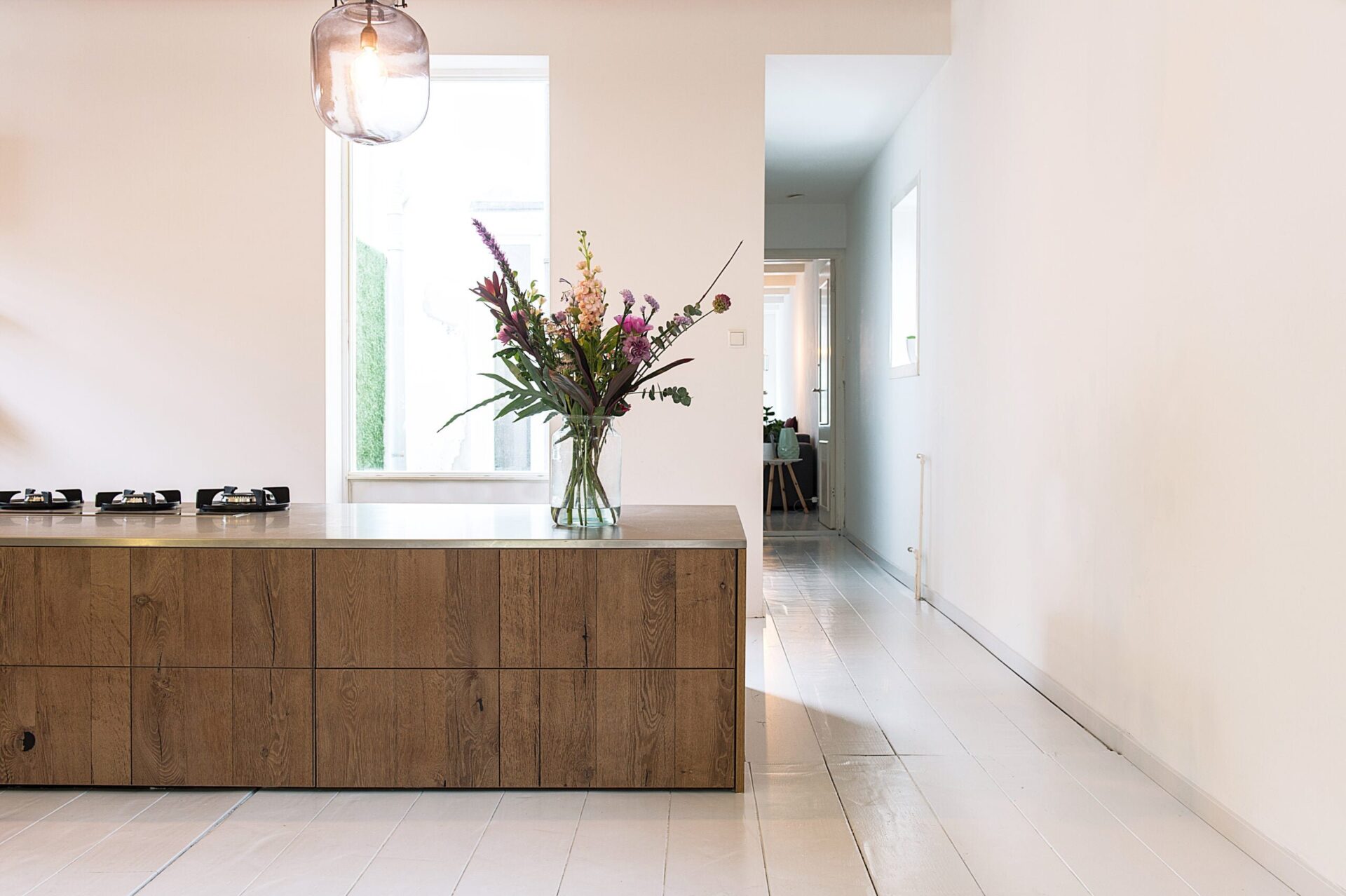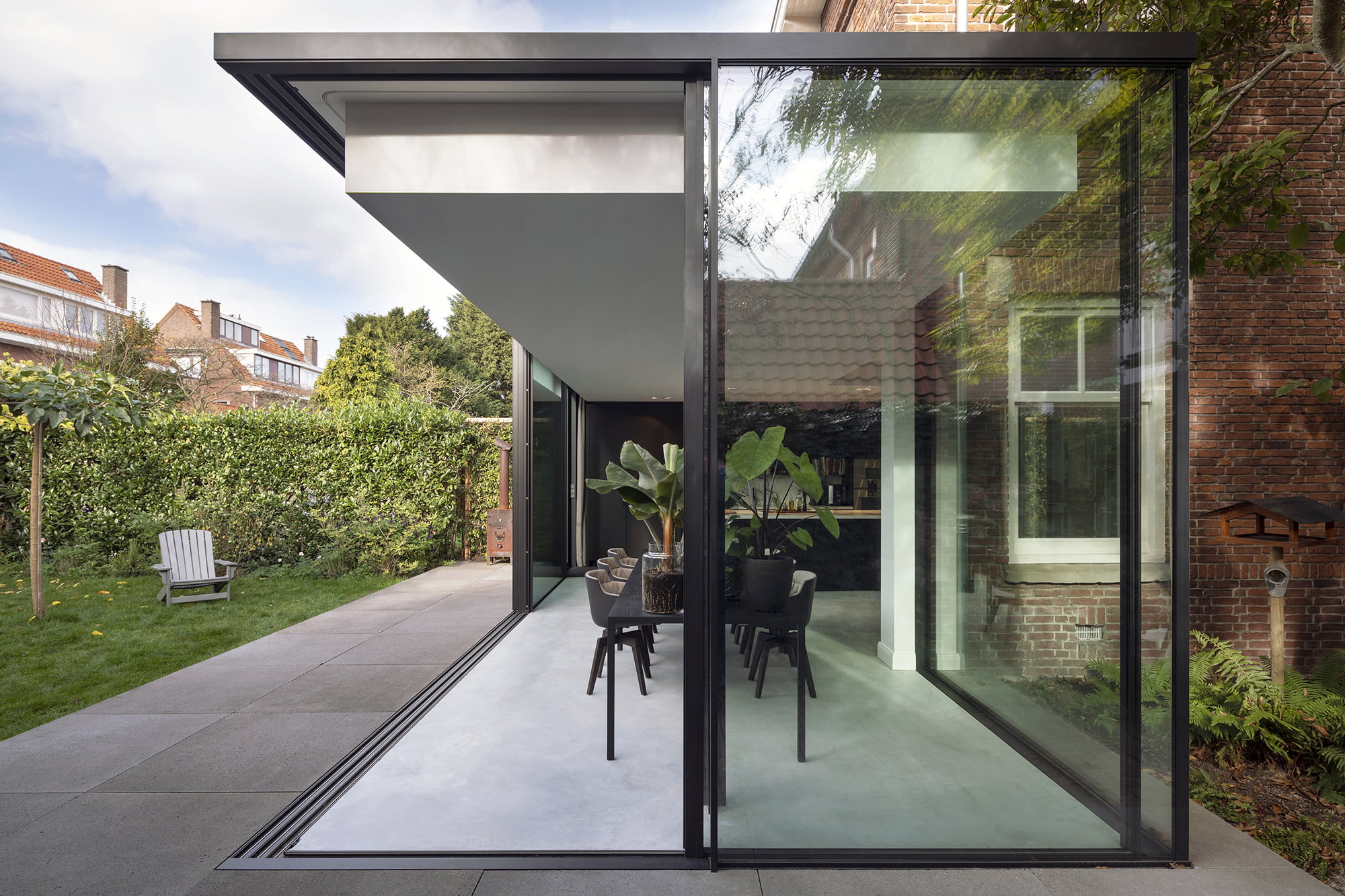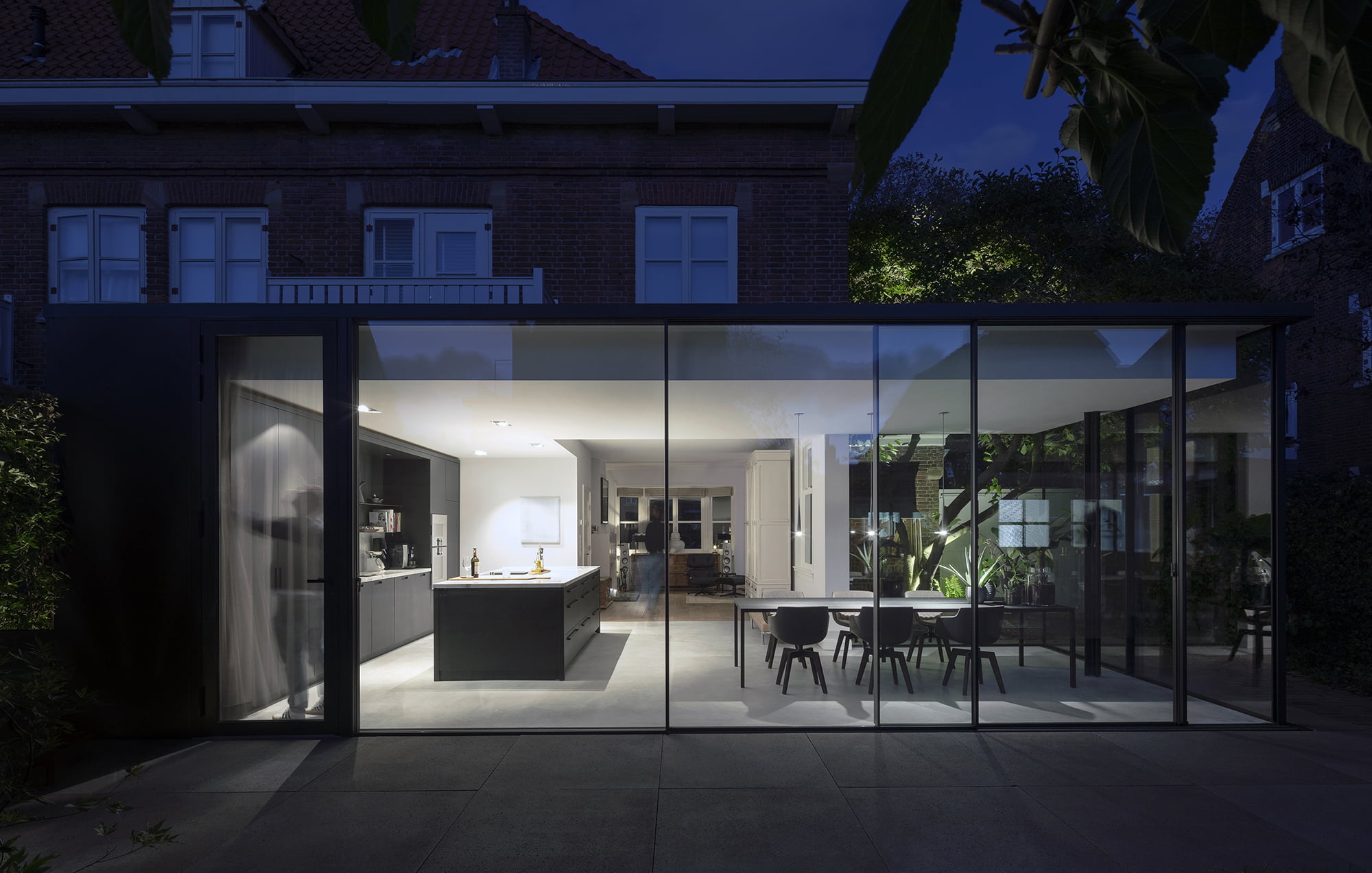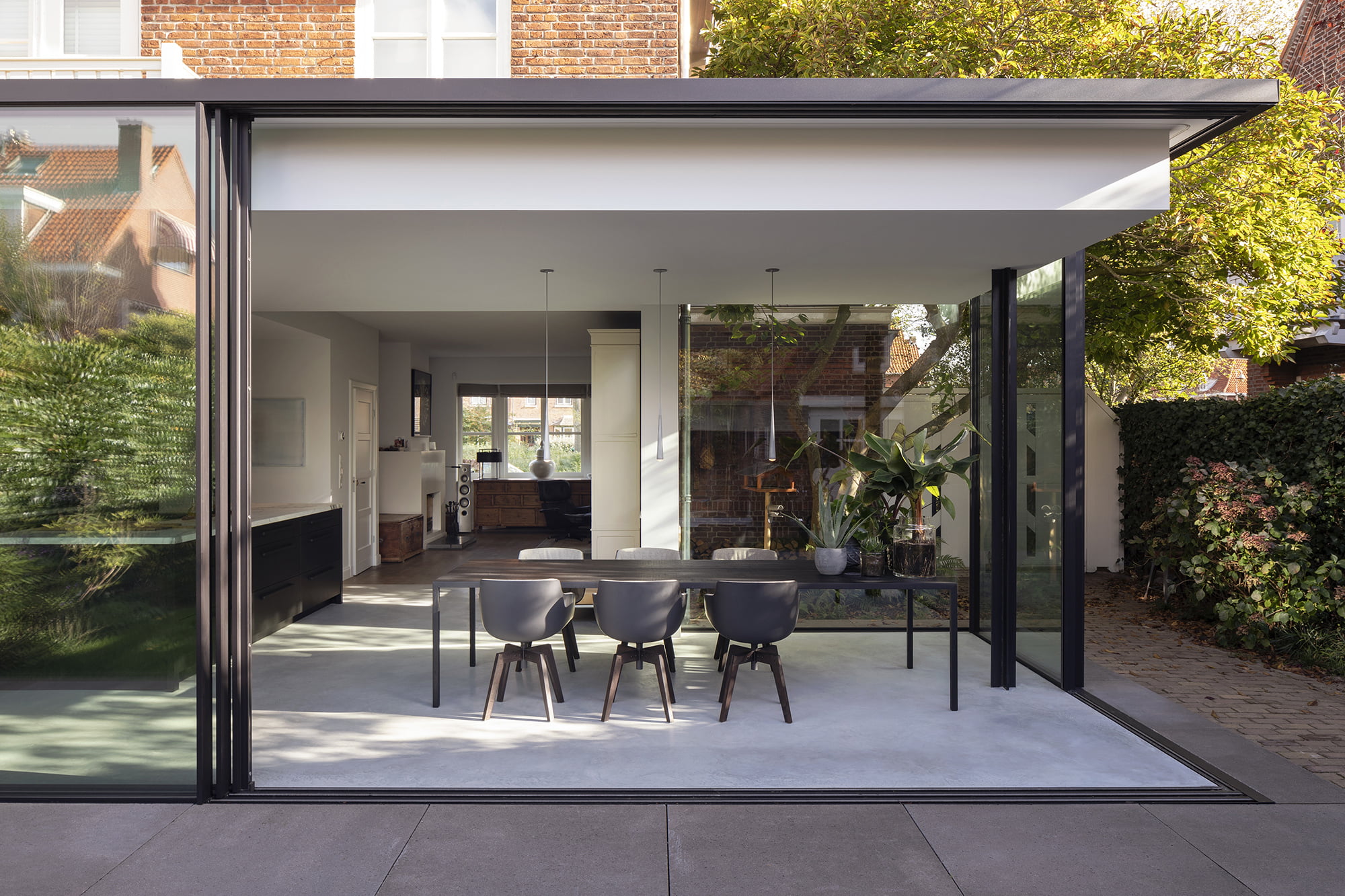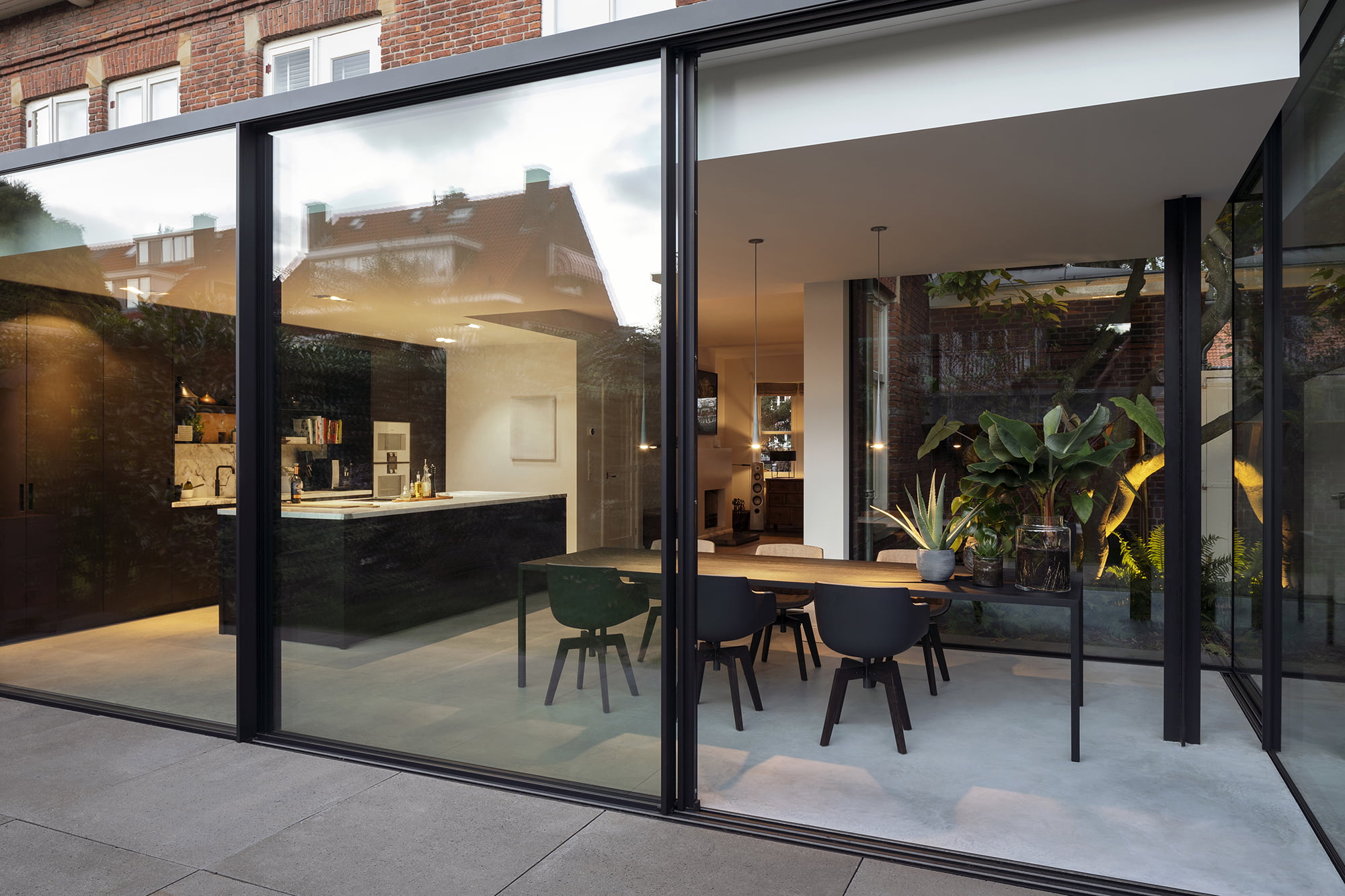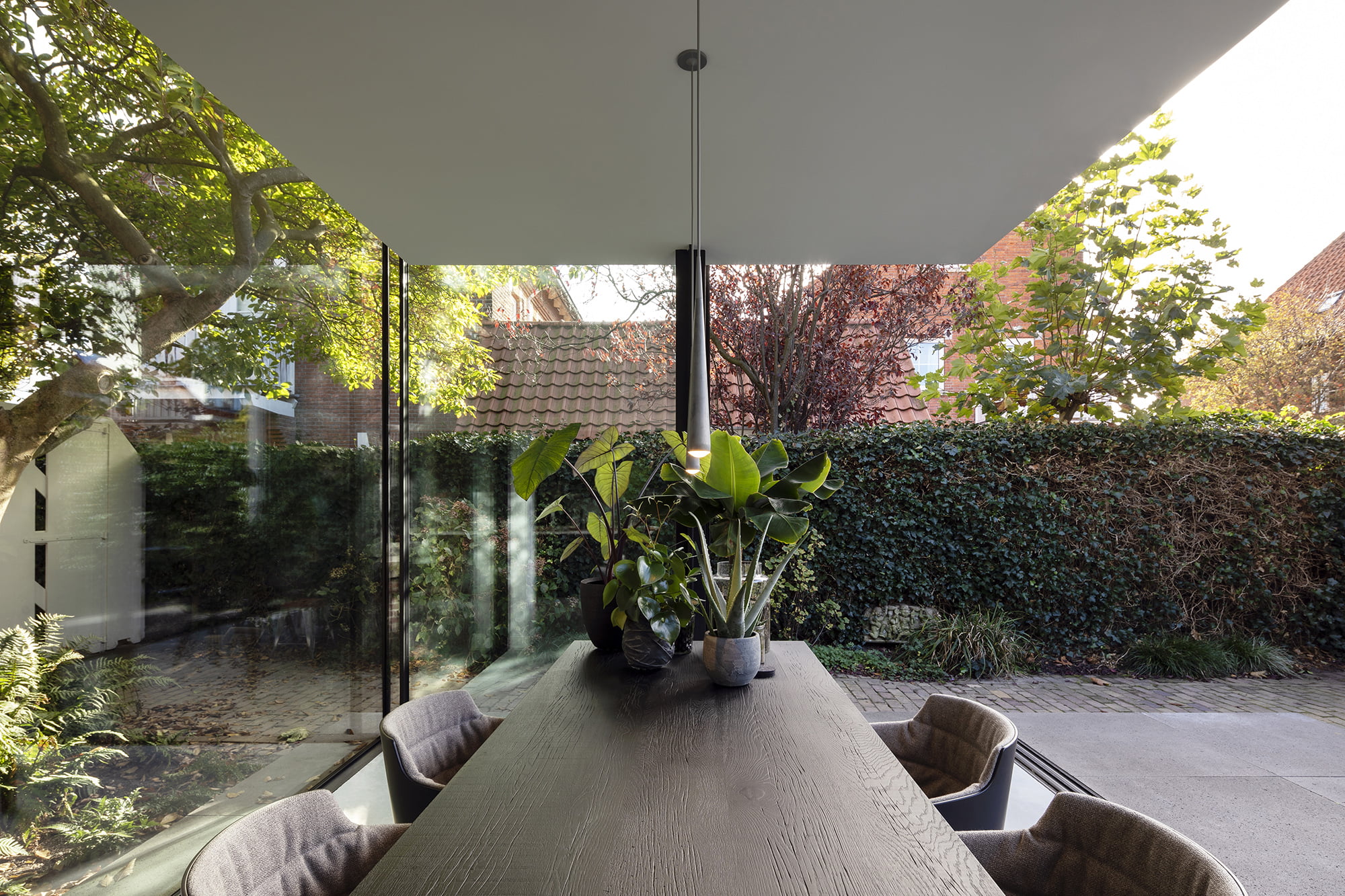Year
2018
Status
Completed
Client
Private
Photographs
Christian Van Der Kooy
Contractor
Aannemersbedrijf L.R. Treep
Existing Situation
The house has an original annex at the front side with behind it a beautiful fig tree in the garden that was not visible from inside the old house. Because the new extension extends beyond the existing width of the house, the glass extension is going into a relationship with the existing annex. This creates a semi-enclosed outdoor space around the old fig tree. By widening the extension, a third world arises around the hidden fig tree alongside the old and the new world.
Seamless transition between inside and outiside
